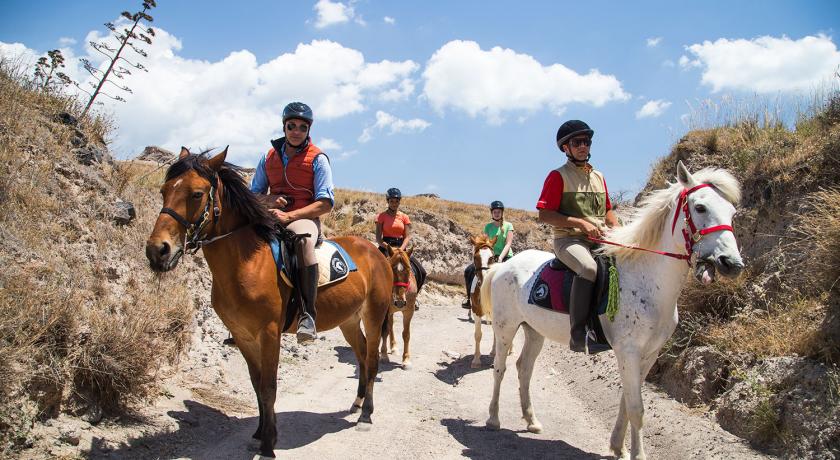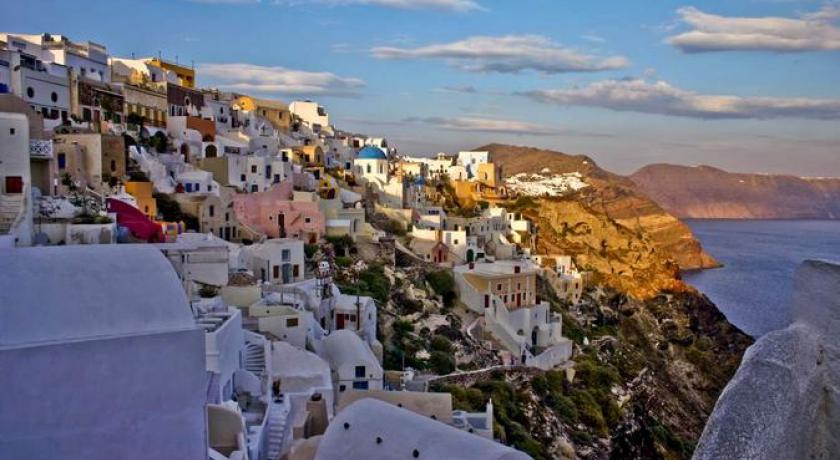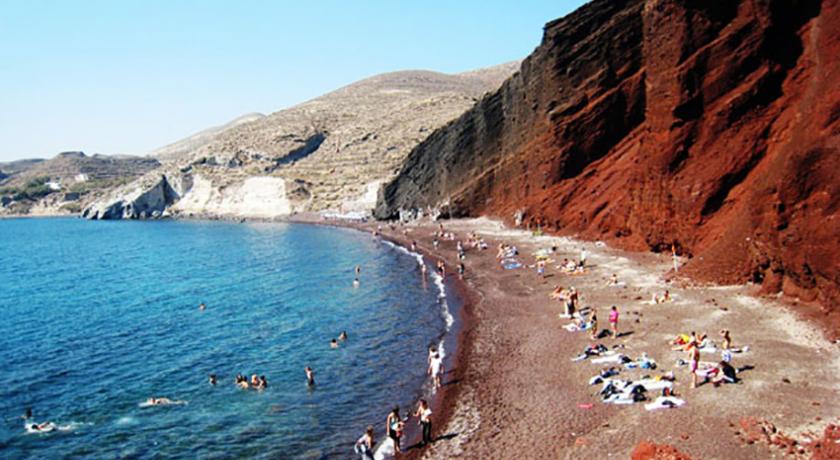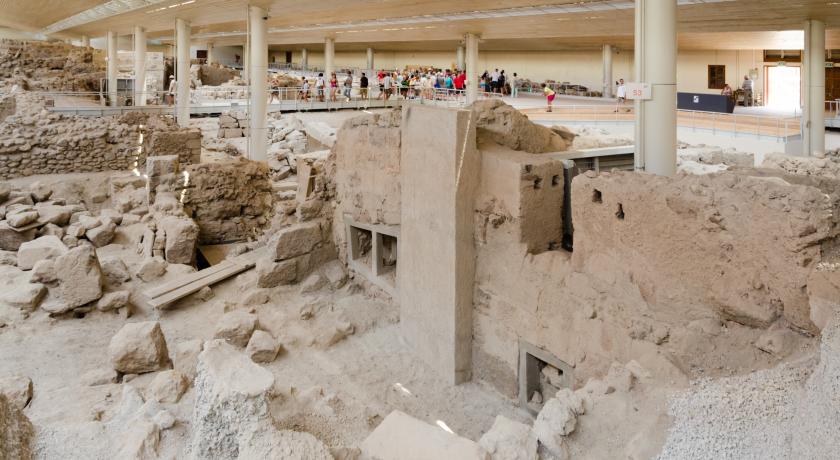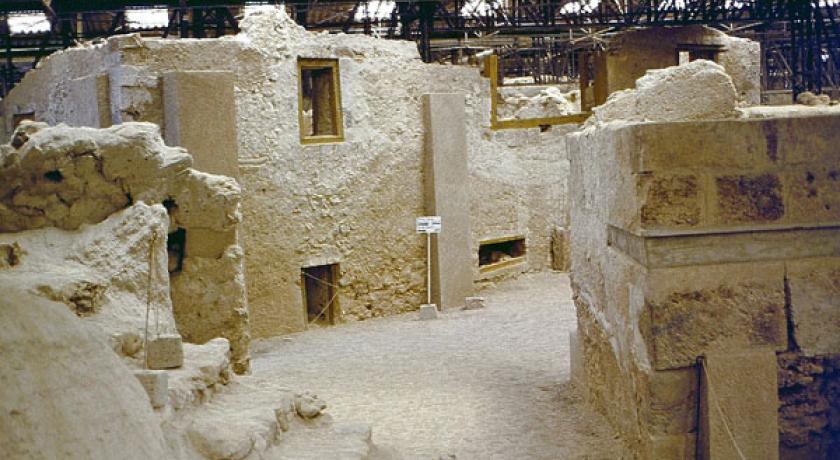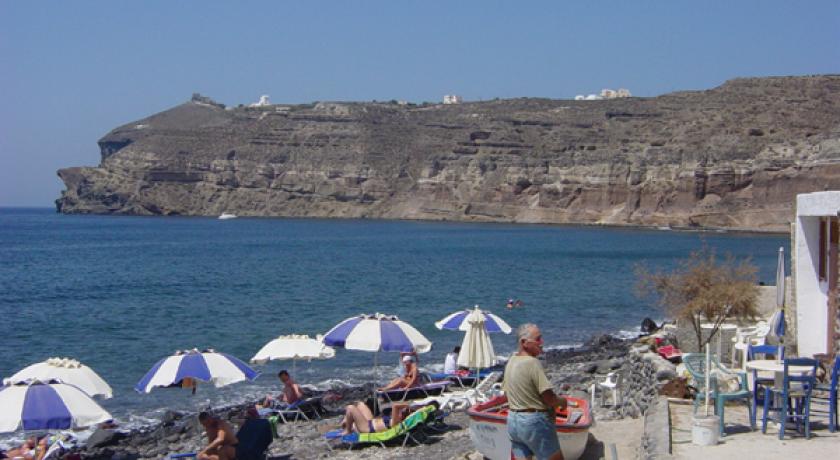Description
Akrotiri, which in greek means "cape", is a small traditional village of Santorini, surrounded by an old Venetian fortress. It is one of the prettiest villages on the island, a real gem not affected yet by mass tourism.
Akrotiri is located on the southwestern cape of the island, opposite to Oia, and it offers as many panoramic sites as Oia to admire the Caldera sight. Along the road from Fira to Akrotiri (about 11km), there are many viewpoints (including bars, cafes and restaurants) where you can stare at the beautiful sunset on the sea.
Akrotiri is certainly one of the most interesting places to take pictures and movies. So it's not an accident that in Akrotiri there are several hotels and luxury suites that offer stunning views from your accommodation.
Near Akrotiri is worth a vist to Santorini Lighthouse located on the southwestern tip of the island, where you can admire the Caldera, the Aegean Sea and the islands in front of Santorini.
The Akrotiri Lighthouse, consisting of a 10-meter square tower built on the lighthouse keeper's house, was built in 1892 and powered by petrol oil (except for a suspension of the service during World War II) until 1983, when it began to be powered by electricity until the full automatization in 1988. Nowadays the lighthouse flashes a white light every 20 seconds and the sunset seen from the stone wall surrounding the main courtyard is one of the most beautiful on the island.
The most crowded beaches of Santorini, like the Red Beach (Pokkini Paralia) and the White Beach (Aspri Paralia), are located about 2km south of the village, as well as lesser-known coves where you can enjoy a quiet day at sea (eg., the beaches of Kambia and Mesa Pigadia).
The most important cultural attraction of the island is located just 2km far from Akrotiri: the Minoan City of Akrotiri. This important archaeological site of Akrotiri, which excavations started in 1967 by the greek archaeologist Spyridon Marinatos, soon brought to light the remains of an ancient Neolithic civilization, completely buried under a thick layer of volcanic deposits, that allowed a perfect preservation of the finds. Many of the finds are now kept at the Archaeological Museum of Athens.
With the excavations a real Minoan city emerged after centuries of burial, as a result of the famous, but catastrophic eruption of the Strongili volcano (Santorini), which destroyed a thriving civilization about 3500 years ago.
Many archaeologists connect the ancient myth of Atlantis and its disappearance to the civilization that once inhabited the island of Santorini and was buried by the awakening of nature in "a day and a night. "
Unfortunately Akrotiri excavations were closed in 2005 after a sudden collapse of the roof that caused the death of two tourists.
Finally after years of renovations to guarantee safety and protection of the archaeological site, in April 2012 there was the reopening of the excavation site of Akrotiri, which can be visited as before.
source http://www.in-santorini.com/santorini-akrotiri.html
Address
Santorini
Greece
Lat: 36.358276367 - Lng: 25.397216797


